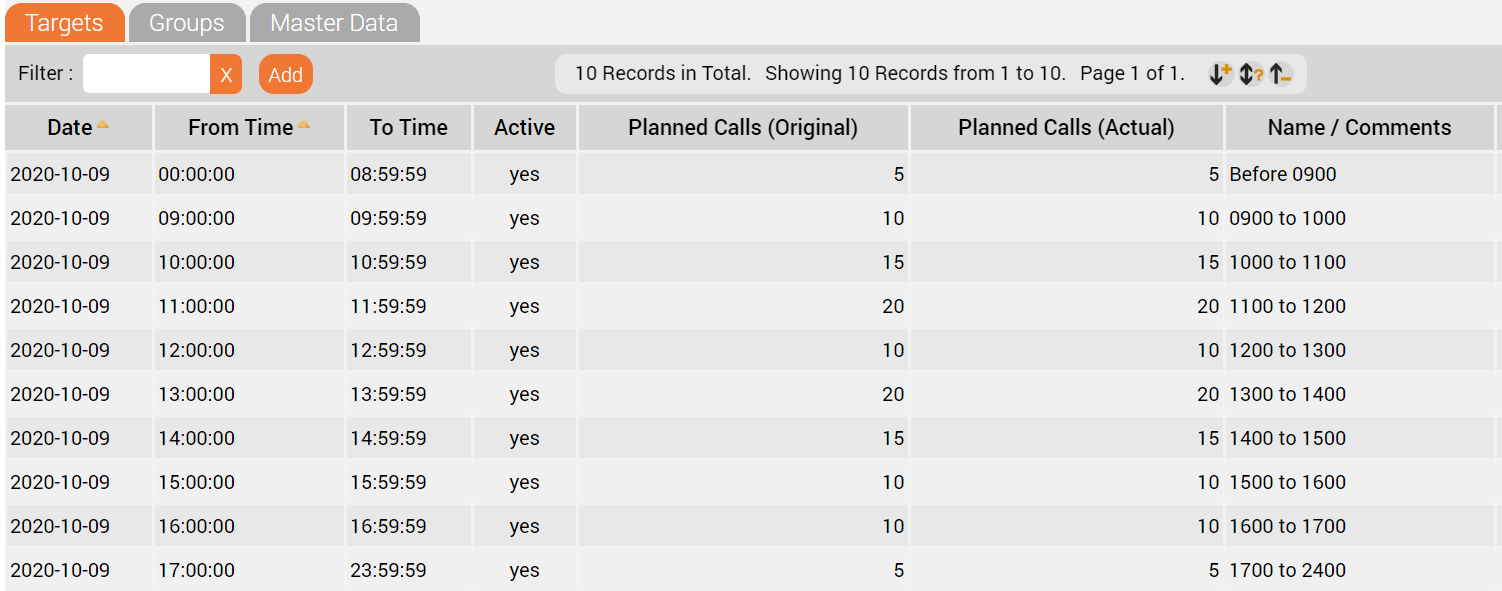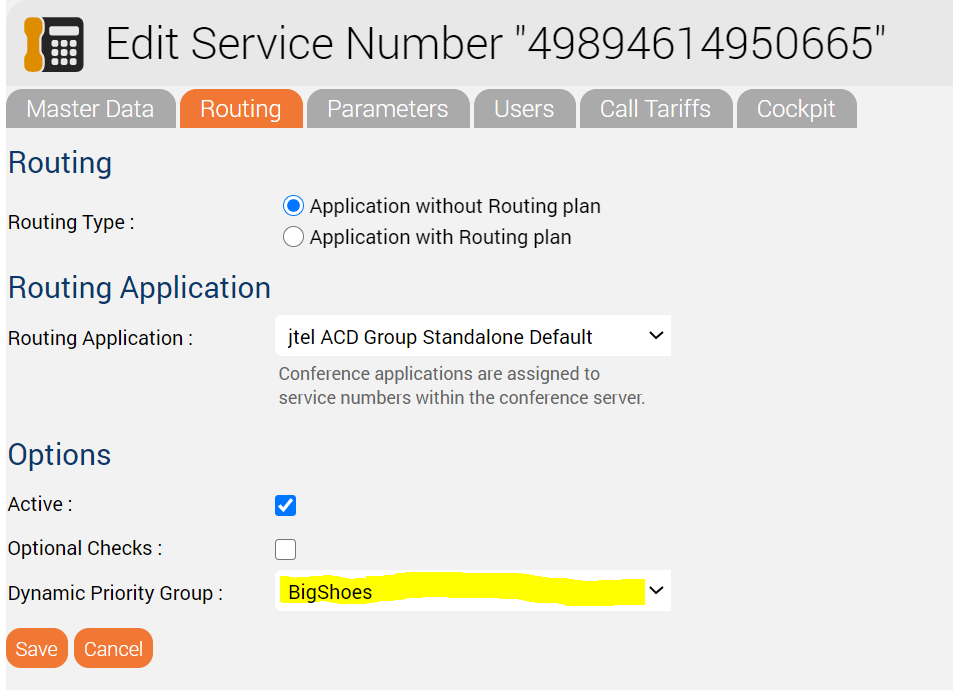Introduction
Dynamic priority groups are used to help control and monitor large call center operations, for example contact center service providers.
A typical scenario is that the call center service provider has several, often dozens or hundreds of customers. Each customer has specific requirements on the contact center service provider, including the number of expected (planned) calls the service provider will be expected to handle on a particular day, or even specific hours in a day.
Dynamic priority groups provide the following features:
- Aggregation of one or more service numbers for a particular client into a dynamic priority group which can be planned, measured and controlled
- Planning of the number of calls expected for the client over all service numbers on any basis including:
- Hourly
- Daily
- Weekly
- Monthly
- Dynamic changing of the priority of the queued calls according to the current delta of calls within each planned timeslice and predicted number of calls for the timeslice
- Overriding the priority ad-hoc by the supervisor to handle special situations, such as reaching a required target within the alotted time by increasing the priority or reducing the level of calls being handled at peak times.
Having agents tasked to the relevant jobs is also important. There are several mechanisms available in the jtel system to help with this:
- Skill based routing with the stair function.
- This enables agents to concentrate on their primary tasks, however if a particular service is providing lots of calls, the stair function will involve less skilled agents as necessary after a delay.
- Note, that the "skill" of agents does not refer to how good they are at a particular task, but rather how soon the system should consider them for a particular task.
- Group Search Extension
- Using extended search groups to complement the routing of the primary group is a good way to involve agents of other groups on highly loaded services.
The combination of dynamic priority groups and the flexible routing options provided, allows for the smart handling of complex scenarios.
Example Dynamic Priority Groups Scenario
The concept is best explained with an example.
Background
Our contact center service provider SuperCenter has the following customers:
- BigShoes - a large customer who sells shoes via an online portal. They also sell via printed catalogues and have an amazon marketplace.
- Most calls to BigShoes are about making orders, deliveries, returns and other customer enquiries regarding the electronic commerce process.
- There are an extremely high volume of calls.
- However not all need to be answered, if busy is signalled by SuperCenter, the call will be transferred to the next service provider by the intelligent network routing of the carrier.
- The call volume for BigShoes must be handled (if enough calls are delivered).
- BigShoes provides expected call volumes to SuperCenter.
- BigShoes has two service hotlines.
- BlueJeans - another much smaller customer who also sells online and through various high street chains.
- Most calls to BlueJeans are about the electronic commerce process, however they do allow customers to return items directly to their high street stores.
- They have a lower volume of calls, however a very high expectancy regarding the service provided by the SuperCenter.
- Over 90% of the calls must be answered.
- Calls are not re-routed by the carrier. SuperCenter must endeavour to answer all delivered calls.
- BlueJeans does not provide expected call volumes, however these can be reasonably predicted from statistical data.
- BlueJeans has one service hotline.
- GreenSocks - a third customer who sells socks via an online portal, but with special requirements because they have a sock subscription service.
- This often results in long waiting times.
- Call volumes are highly unpredictable even though GreenSocks provides expected call volumes.
- Not all calls need to be answered, if busy is signalled by SuperCenter, the call will be transferred to the next service provider by the intelligent network routing of the carrier.
- SuperCenter is allowed to answer calls and play announcements and music on hold. However, if they do this, then the average waiting time is not expected to exceed a certain level.
- GreenSocks has one service hotline.
Key Requirements for each Customer
It's not trivial to run a contact center which needs to provide such conflicting levels of service. Each customer has their own requirements which are summarised below.
| Customer | Key Requirements |
|---|---|
| BigShoes | Handle the expected call volume within each period for which call volumes are provided. |
| BlueJeans | Handle 90% of all calls. |
| GreenSocks | Handle as many calls as possible, but do not exceed the average waiting time. |
Next, we discuss elements of a setup to help deal with these requirements.
Configuration
ACD Groups
Three ACD groups are created as shown:
Note, the exact configuration of the ACD groups is not discussed here.
Dynamic Priority Groups
Next, dynamic priority groups are created for each of the customers. These are shown here:
The dynamic priority groups are associated with the relevant ACD groups who answer the calls for each service number. Note - this can be more than one ACD group in each case.
In our example, we will have one ACD group per dynamic priority group.
Planned Calls
In the dynamic priority group, the number of planned calls are provided. Here some examples are shown:
Service Numbers
The service numbers configuration must be updated, to associate the service number with the dynamic priority group. This is configured in the service number:
Using Dynamic Priority Groups
Operation
Supervisor can use the tab "Dynamic Priority Groups" to view the current system operation.



